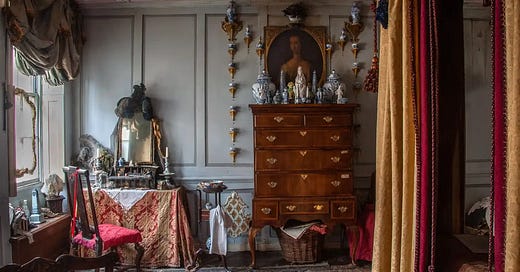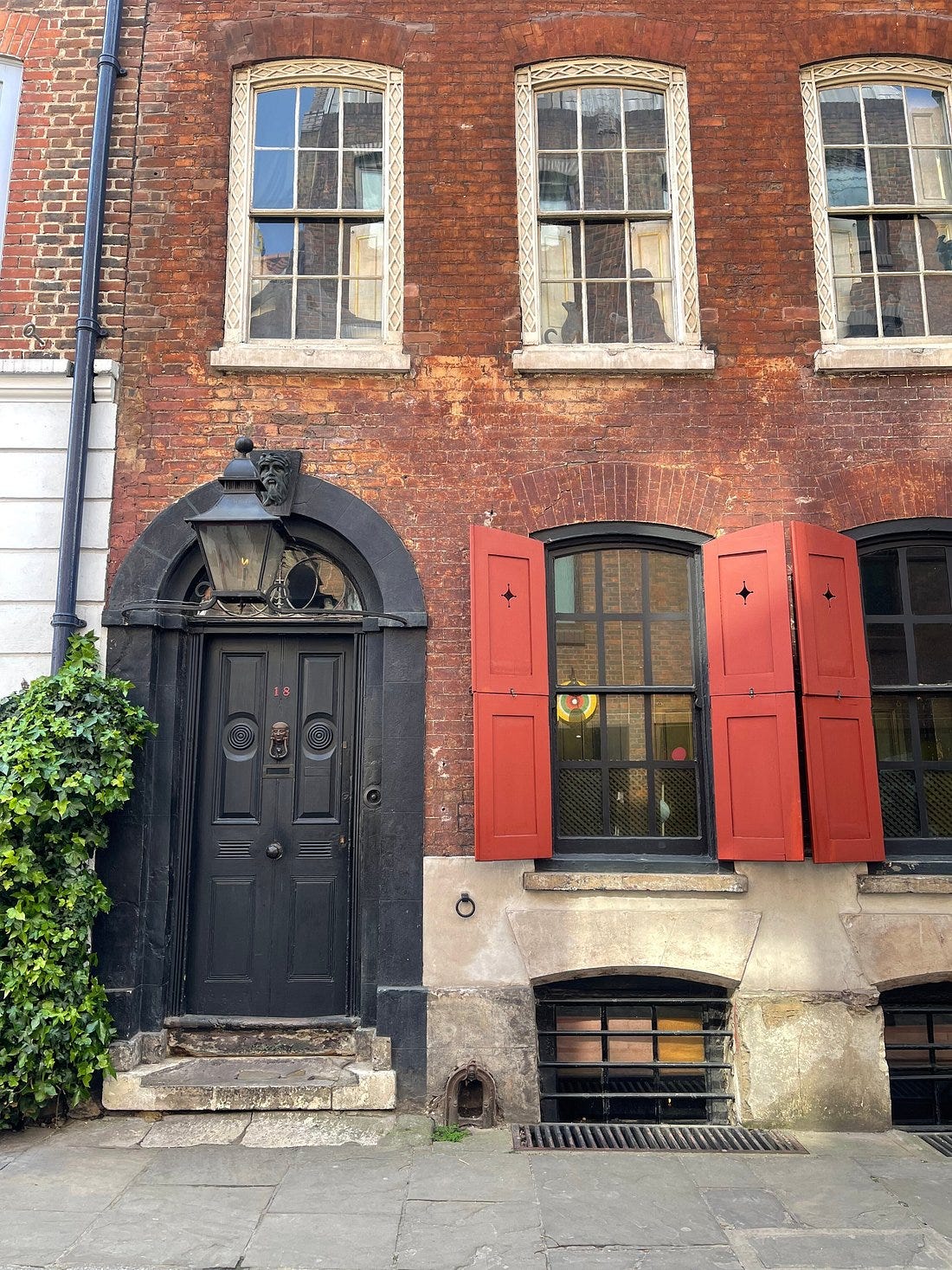Design Postcard: the house of Dennis Severs
A home should tell a story – but what if that story is completely made up?
This is a free post - part of a series of Design Postcards from all over the world. If you wish to upgrade to a paid subscription for lots more content and the chance to join my monthly Drop-In Design Clinic you can upgrade to paid at any time.
In 1979 an American with a fascination for the “English light” bought a dilapidated Georgian house in Spitalfields, an area of London once famous as the centre of the city’s silk industry in the 18th century. Dennis Severs, who lived in the house until his death 20 years later, set about restoring the house and imagining it as it would have been for a family of Huguenot silk weavers and their descendants.
Every room tells a story of the Jervis family; there are onions roasting on a pan by the fire, logs crackle and half-drunk glasses of wine set next to half-written letters, even a half-eaten boiled egg waits for its diner to return but perhaps the half-filled chamber pot tells its own story.
That story, however, is a complete fantasy. Severs created a home that tells a story for a family who never existed.
Each of the 10 rooms focuses on a different period, ending with the death of Queen Victoria in 1901. There is no electricity – the house is lit by candles and gas lamps. There is no bathroom. It has been described as "a three-dimensional historical novel, written in brick and candlelight", from the Dickensian rooms on the top floor where the floorboards creak and the ceiling has holes, to the log fire crackling in the basement kitchen where wax mice run along the dresser.
It is, without doubt, one of the strangest places I have visited. One of Severs’ friends, a carpenter in his 70s still lives there, sleeping in the main bedroom which is dressed to resemble a genteel lady’s chamber, complete with a four-poster bed and her hairbrush on the dressing table.
The room next door recreates a Hogarth painting of an unruly gathering, with an upturned chair, broken clay pipes on the hearth and a half drunk glasses of wine. The idea is that you walk into each room and feel as if its inhabitants have just left.
It’s fascinating and oddly unsettling. The rooms are beautiful – it’s a large Georgian house with panelling and plasterwork after all. But the floorboards creak and, while the guides assure you it’s safe, the ceilings are bowed (apparently Dennis liked the way the light looked when the rain was dripping into the Dickensian top-floor rooms) and if it’s possible to sense the ghosts of an imaginary family, then you feel them here.
I find I am as fascinated by its creator and the fans curators who keep it going as I am by the museum itself. You may not take photographs. If you book a relaxed visit you may talk a little, but you can also book a silent trip. There’s a strong feeling that that is what the guides would prefer. Once inside you are free to wander at will as long as you look and don’t touch.
As with the Carlo Mollino house in Turin, another incredible house created by a man who never lived in his creation and never even told anyone he owned it, the fantasy is kept alive by those who keep the keys and hold the legacy.
It’s open three days a week and some evenings. The current inhabitant goes to his workshop during these times and returns when the house is empty once more. Sitting in the stage set of a drawing room, perhaps he feels more at home with the imaginary ghosts of Severs’ fictionalised Jervis family who have, perhaps, over time, become more real to him than the corporeal visitors of the 21st Century traipsing around the rooms complaining, not quite quietly enough, that they aren’t allowed to take pictures.
Outside the house is a giant flickering gas light. Inside, it’s perhaps one giant gaslighting experience. The question is: does that matter?
I’ll let you decide if you find yourself in this part of London with £16 to spare.
Thank you for reading this post. If you have enjoyed it please do consider liking or sharing as that helps more people to discover this newsletter.










We visited on a very rare trip down to London in 2018. What a house! So inspiring... I'd love to go again... on one of their special Christmas evenings x
Kate, I love this. I walk by this house regularly and it looks good in all weathers - in a way, it looks all the better on a grey and rainy winter's day as the lantern outside makes it look so welcoming. Thanks for this interesting read! x